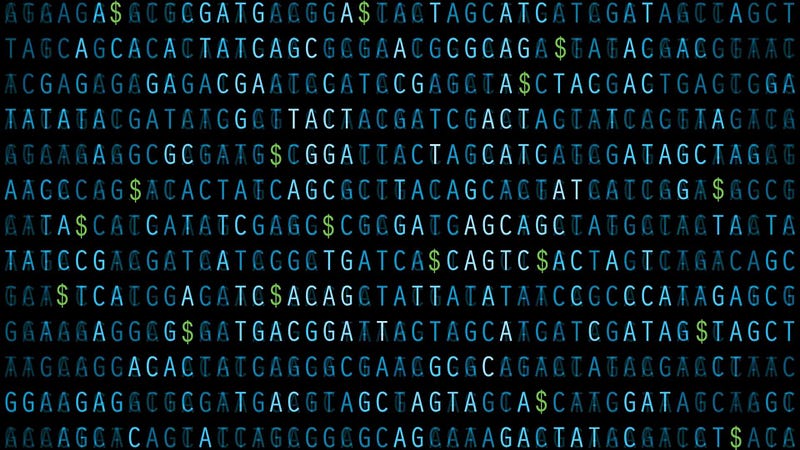Unlocking Genetic Potential: The CRISPR Revolution Explained
Written on
Chapter 1: Understanding CRISPR-Cas9
CRISPR-Cas9 has emerged as a revolutionary tool, likened to a “Swiss Army knife” for genome editing. It opens up a realm of possibilities, from designer babies to potential treatments for severe illnesses such as cancer, HIV/AIDS, and sickle cell disease. This is just the beginning of its applications.
If you haven't come across CRISPR-Cas9 yet, you may be living under a rock! This groundbreaking discovery has transformed the scientific landscape, challenging the belief that humans are powerless when it comes to manipulating the genetic structure of any organism—including ourselves. For eons, evolution alone governed genetic changes, driven by beneficial mutations that enhanced survival and reproduction. However, we now understand that scientists can actively alter genomes, whether to treat debilitating conditions or achieve more desirable traits.
Let’s dive into what CRISPR is, its capabilities, and its current applications.

Your Genes Could Be A New Target For Profit
What is CRISPR-Cas9?
CRISPR-Cas9 is essentially a defense mechanism that bacteria have used for billions of years to fend off viral attacks. You might be surprised to learn that bacteria can be infected by viruses, but they indeed can!
When bacteria encounter a virus, they utilize CRISPR to slice out a segment of the viral DNA and keep it within their own genome—essentially creating a "mugshot" of the invader. This allows them to recognize and combat the same virus in future encounters. The acronym CRISPR stands for Clustered Regularly Interspaced Short Palindromic Repeats, but we can just call it CRISPR for convenience.
Who Discovered CRISPR?
While the origins of CRISPR’s discovery have been debated, the two most recognized figures are Jennifer Doudna, a professor at UC Berkeley, and Emmanuelle Charpentier, who teaches at Humboldt University in Berlin. In 2011, Charpentier approached Doudna to explore her findings on bacteria’s use of CRISPR for viral defense. Their collaboration revealed how CRISPR-Cas9 could not only protect bacteria but also be programmed to edit an organism's genome, acting like molecular scissors.
Why Does This Matter? What Can CRISPR Do?
The discovery of CRISPR has opened doors to numerous potential applications, some beneficial and others questionable. Editing an organism's genome could lead to:
- Cures for sickle cell disease, HIV/AIDS, and cancer
- Cloning and improving animal organs for human transplants
- Creating crops resistant to mold, fungus, and drought
- Curing blindness
It even holds the promise of altering physical traits, such as eye color or hair texture, though these applications require extensive research and ethical considerations. Ideally, the primary focus should be on healing and enhancing quality of life before pursuing cosmetic enhancements.
What Has CRISPR Already Achieved?
Remarkably, CRISPR has already alleviated suffering for many by treating sickle cell disease. Recent advancements include curing specific animals of HIV-1 through a combination of CRISPR gene editing and antiretroviral medications. It has even played a role in the development of COVID-19 detection tests.
As you can see, CRISPR is an incredibly potent tool for genome editing. However, this power carries immense responsibility. We no longer have to rely solely on evolution to dictate our genetic paths; we now have the capacity to shape our own destinies. As Spider-Man's Uncle Ben wisely stated, "With great power comes great responsibility."
I hope this overview of CRISPR has piqued your interest! I find this field of science absolutely captivating, and I look forward to learning more about biology and genetics.
Please share your thoughts in the comments—let's keep the discussion respectful! If you enjoyed this article, don’t hesitate to share it with friends and family who might find it intriguing.
See you next time, and take care!
By Noah L.
Sources:
- Jennifer Doudna and Emmanuelle Charpentier win 2020 Nobel Prize in Chemistry
- With CRISPR cures on horizon, sickle cell patients ask hard questions about who can access them
- Dual CRISPR Gene Editing Strategy Cures Animals of HIV-1
Chapter 2: CRISPR in Context
CRISPR technology is not just a scientific breakthrough; it represents a paradigm shift in our approach to genetic engineering. The implications for society, ethics, and health care are profound.
This video titled "CRISPR in Context: The New World of Human Genetic Engineering" delves into the societal implications of CRISPR technology and its potential to reshape our understanding of genetics and ethics.
Chapter 3: The Gene Editing Revolution
The gene editing landscape is changing rapidly, with CRISPR at the forefront of this revolution.
The video "The Gene Editing Revolution" explores the transformative effects of gene editing technologies and their potential to solve some of humanity's greatest challenges.